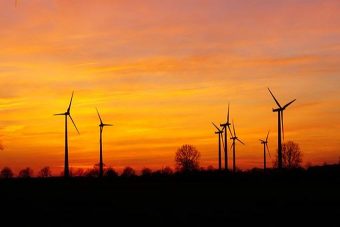
New wind power capacity in the Middle East and Africa region in 2016 amounted to 676 megawatts, but MAKE Consulting expects the region’s capacity to skyrocket over the next decade, with an expected 40 gigawatts being installed between 2017 to 2026.
Leading renewable energy industry analysts MAKE Consulting published its 2017 Middle East and Africa Wind Power Outlook this week, revealing that the Middle East and Africa (MEA) region installed 676 megawatts (MW) of new wind capacity in 2016, compared to 682 MW installed in 2015. This brings the region’s cumulative wind power capacity up to 4.2 gigawatts (GW) — not bad, considering the region only had 1 GW at the end of 2010.
The region’s new capacity additions were led by South Africa and Morocco, which accounted for 80% of the MEA’s total capacity additions last year. Specifically, South Africa’s Renewable Energy Independent Power Producer Procurement Program (RE IPPPP) continues to support new wind power capacity growth, although the RE IPPPP Round 4 has been impacted by ongoing delays in the government’s signing of Power Purchase Agreements. Meanwhile, in Morocco, the Law 13-09 (which allows private power producers to supply electricity to the grid or a third party via a Power Purchase Agreement) remains a strong driver of new wind power growth.
Unsurprisingly, therefore, MAKE Consulting points out that the Middle East currently remains behind Africa in terms of wind power development, only accounting for 8.7% of total cumulative capacity.
Looking forward, MAKE Consulting predicts the MEA region to install nearly 40 GW of new wind power capacity between 2017 and 2026, driven by significant wind resources across the region and a more developed and experienced value chain. This last will specifically result in the gradual reduction of wind power’s Levelized Cost of Electricity, dropping 15% between 2017 and 2022. Already auctions in countries such as South Africa, Egypt, Morocco, and the United Arab Emirates has resulted in some of the cheapest bidding prices globally for both wind and solar projects — confirming that the global trend of declining renewable energy prices is not avoiding emerging economies and markets.
Source: cleantechnica.com



